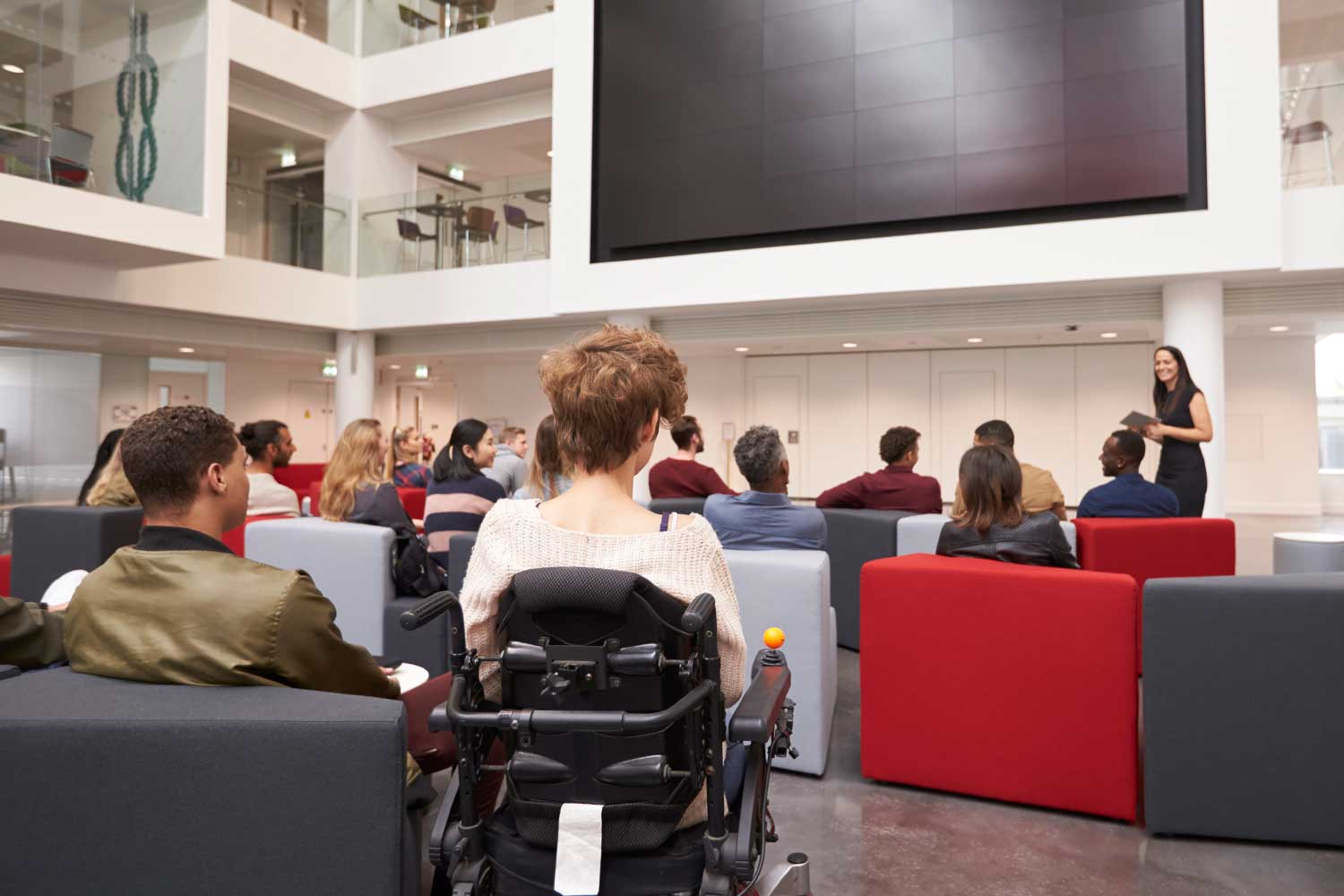
AV Technology That Supports Accessibility and Equity in Higher Ed Learning Spaces
Every campus has that one room, the space everyone avoids booking because it never seems to work for every student. Maybe the audio misses soft voices. Maybe captions lag just enough to make lectures exhausting. Or maybe the layout makes it difficult for a student with mobility challenges to participate without drawing unwanted attention. For the teams responsible for supporting these spaces, it is more than an inconvenience. It is a reminder that even with the best intentions, the learning experience is not always equitable.
During a walkthrough at a large university earlier this year, a student paused outside a general education classroom before stepping in. "I always sit in the back," she said quietly, "because the microphones up front never pick me up." No ticket submitted. No email to IT. Just a silent workaround she had learned to accept.
That moment spoke louder than any support request. It revealed an accessibility gap leaders often do not see until it becomes too big to ignore. Later that semester, a small technology upgrade in that same room reshaped more than the audio experience. It changed the way students engaged in the class.
What happened next redefined what accessibility can look like when AV works the way it should.
Why Accessibility and Equity Must Be Integrated Into Higher Education Learning Spaces
Higher education has entered a new era one where students expect learning environments that support diverse needs, styles, and abilities. Accessibility is no longer a compliance-driven task; it’s an essential part of student success, engagement, and retention.
Universities are also facing pressure from:
-
Growing enrollment of students with disabilities
-
Expanded hybrid and remote learning demands
-
Rising expectations for inclusive technology
-
The need to modernize aging AV systems across campus
To meet these expectations, IT leaders, CIOs, facilities teams, and academic technologists must rethink how campus AV supports equitable access not just for a few students but for every learner who walks into the room.
Accessible Audio Systems That Improve Equity in Higher Education
Audio issues are one of the biggest barriers to student participation. The right AV technology can transform the experience.
Key solutions include:
-
Beamforming microphones that pick up voices across the room without students needing to adjust their behavior.
-
Personal listening devices and assistive listening systems that allow students to connect directly from their phones.
-
Adaptive audio processing that improves clarity for neurodiverse learners and students with auditory processing challenges.
When students no longer need to self-advocate just to be heard or to hear your classrooms become more equitable by design.
Captioning, Transcription and Visual Tools That Improve Classroom Accessibility
Modern students rely on multi-modal learning. Captioning and transcription aren’t optional they’re essential.
AV-led accessibility enhancements include:
-
AI-driven live captioning for in-person, hybrid, and fully remote classes.
-
Automated transcripts updated in real-time and available after every session.
-
Accessible display systems with adjustable font sizes, color contrast options, and screen placement for visibility from anywhere.
-
Digital whiteboards and content-sharing tools that eliminate the limitations of traditional chalk or marker boards.
These tools support deaf and hard-of-hearing students, ESL learners, neurodiverse students, and anyone who benefits from reinforced content.
Flexible Classroom Layouts and Adaptive AV Controls for Physical Accessibility
Equity also lives in how students move through and interact with a room.
AV technologies that support physical accessibility:
-
Touchless or voice-activated controls for lights, displays, and room settings.
-
Accessible control interfaces placed at ADA-compliant heights.
-
Automated camera tracking ensures every student and instructor can be seen in hybrid environments, without manual presets.
-
Modular furniture and display placement supported by AV infrastructure that adapts to varied mobility needs.
These improvements remove the physical barriers that make learning uneven across the room.
Hybrid Learning AV Tools That Support Equitable Student Participation
Equitable higher ed must meet students where they are on campus, online, or both.
Key AV technologies that strengthen hybrid equity:
-
High-quality lecture capture that preserves audio, video, shared screens, and whiteboard content.
-
Auto-framing PTZ cameras that focus intelligently on speakers or groups.
-
Unified collaboration platforms integrated directly into room AV systems.
-
Dual-display teaching stations supporting simultaneous in-room and virtual engagement.
When the room works for every learning format, the experience becomes inclusive by default.
Using AV Data and Analytics to Improve Accessibility Over Time
Your AV ecosystem can also reveal barriers you didn’t know existed.
Higher-ed institutions are leveraging:
-
Room analytics to identify underperforming classrooms
-
Device monitoring for real-time performance tracking
-
Engagement insights from lecture capture platforms
This data helps leaders make informed updates that directly improve accessibility and student success.
The ROI of Accessible AV Technology in Higher Education
Investing in accessible AV technology supports more than compliance.
It drives measurable outcomes:
-
Higher student retention and course completion
-
Better faculty adoption of technology
-
Fewer support tickets for AV and IT teams
-
Increased room utilization for poorly performing spaces
-
Stronger alignment with institutional DEI and student success goals
Accessibility isn’t an add-on. It’s a core component of modern campus infrastructure.
Build More Accessible and Equitable Learning Spaces?
Whether you're a CIO, IT Director, Facilities Manager, or academic technology leader, you’re responsible for creating environments where all students can succeed. The right AV strategy doesn’t just meet accessibility standards it elevates them.
If you're ready to build more inclusive learning spaces, our team can help you assess your current AV systems and design a roadmap that supports true equity across campus.

